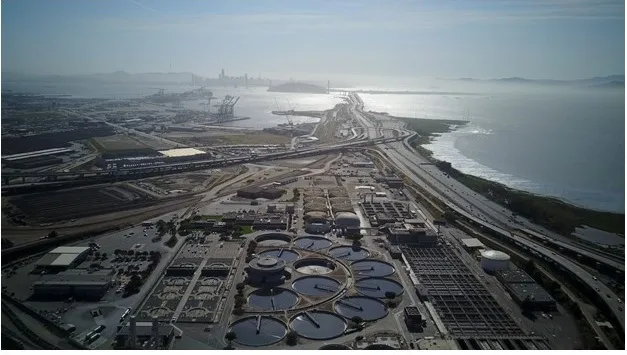Why we care
Adding alkalinity to the ocean may provide a safe and effective approach to removing carbon dioxide from the atmosphere. Assessing the efficacy and efficiency of ocean alkalinity enhancement are essential steps to ensuring that this method of carbon dioxide removal can contribute to mitigating climate change and ocean acidification.
What we will do
Through partnership with a local wastewater treatment plant in San Francisco Bay, this project will conduct an experiment that adds alkalinity to ocean water to test its effect on removing carbon dioxide from the atmosphere. Researchers will first use a numerical modeling framework to design the experiment, including the release strategy and a sampling plan that will track effects in the environment. Following the experiment, the team will conduct a retrospective analysis that combines models and observations to estimate the efficacy of the alkalinity release in removing carbon from the atmosphere. Further, they will apply the modeling framework to estimate the efficiency of removal. The technical work will be accompanied by public engagement to introduce local groups and communities like Tribes, NGOs, civil society organizations to the project. Engagement will explore how the project aligns with their views and priorities, and what associated risks and co-benefits these groups perceive.
Benefits of this work
This work provides an evaluation of alkalinization efficacy in a specific coastal ocean system. Dr. David Ho of the University of Hawai’i and principal investigator of the project says it “represents the first time an alkalinity release is conducted with the 3He/SF6 dual tracers and allows us the opportunity to determine air-sea CO2 fluxes and track the evolution of an ocean alkalinity enhancement” over this time scale. Also delivered is a “demonstration of how we develop tools for a monitoring, reporting, and verification (MRV) of ocean carbon dioxide removal.” The project also provides recommendations on methods and best practices for conducting public engagement alongside future pilot field trials of ocean alkalinity enhancement and related marine carbon dioxide approaches.
Award amount: $1,915,600
Funding source(s): NOAA, ClimateWorks Foundation
IRA funding? Yes
Project duration: 3 years
Investigators
David Ho, University of Hawai’i, Manoa
Danielle Bianchi, University of California Los Angeles
Matthew Eisaman, Ebb Carbon, Inc.
Alicia Karspeck, Convergent Research, LLC
Matthew Long, Convergent Research, LLC
James McWilliams, University of California Los Angeles
Sara Nawaz, American University
Mallory Ringham, Ebb Carbon, Inc.
Read the webstory from the University of Hawai’i, Manoa
Image: Wastewater treatment plants could be leveraged as a site for marine carbon dioxide removal. Courtesy of East Bay Municipal Utility District



